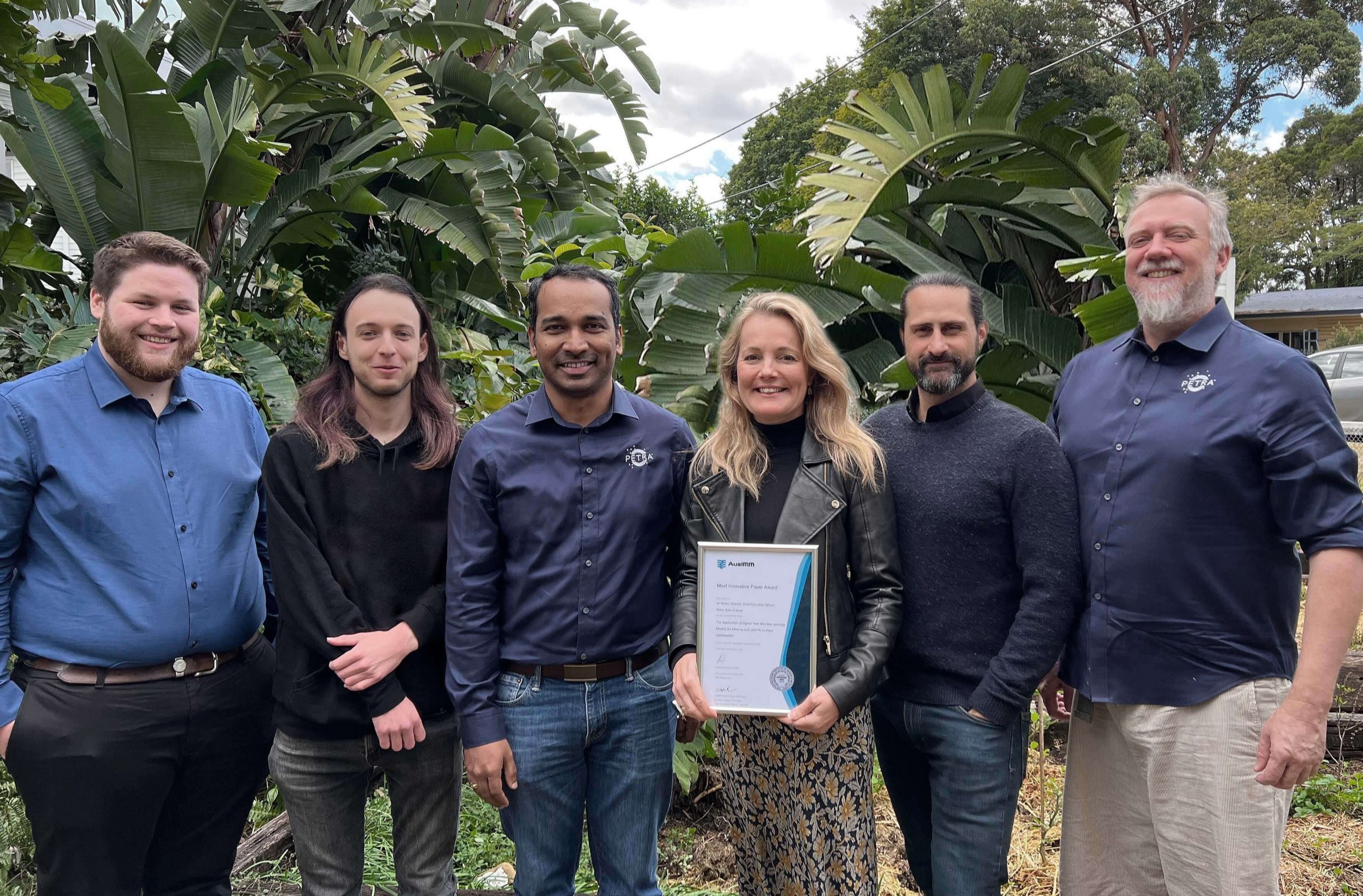We are thrilled to receive AusIMM’s Most Innovative Paper Award for:
The Application of Digital Twin Machine Learning Models for Mine-to-mill and Pit-to-Plant optmisation.
This is a remarkable achievement by the PETRA team and we are so excited to share the news. The paper was authored by James Carpenter, XiaoMing Hu, Rob Embry , Evan Jones, Zeljka Pokrajcic and Penny Stewart.

The award winning paper explains how ‘orebody learning’ technology enables mining operations to systematically learn and optimise their operations through experience.
Proprietary data fusion ore tracking converts spatial geological data into a ‘time-series geological data set’ (fused geological data) suitable for machine learning modelling processes such as load and haul, crushing, milling, and flotation. This machine learning process allows for amplified orebody knowledge.
Case studies demonstrate how orebody knowledge is translated into operational decisions by:
- adding new ‘operational experience’ variables to the block model
- simulating how different ore combinations (mining schedule) impact productivity, recovery, efficiency, and ore quality
In contrast to 3D geological modelling from limited drillholes and laboratory tests, orebody knowledge acquired through data fusion ore tracking and machine learning fuses tens to hundreds of millions of tonnes of ore data to characterise the orebody as it is mined.
Six open pit case studies are presented demonstrating how orebody learning provides operational decision support through improved predictability for accurate scheduling. It also enables implicit blast optimisation for loading, crushing, grinding as well as enabling dynamic processing plant set point optimisation (dynamically responds to changing ore characteristics).
Orebody types included in the case studies include epithermal gold-silver, porphyry copper, porphyry copper-gold, magnetite, and haematite orebodies.
The case studies show how cloud hosted machine learning processes run mining schedule simulations to produce accurate downstream process predictions. The specific types of machine learning models implemented for each case study are presented, as well as the methods used to test and validate the models.
The full document is available to download below.
